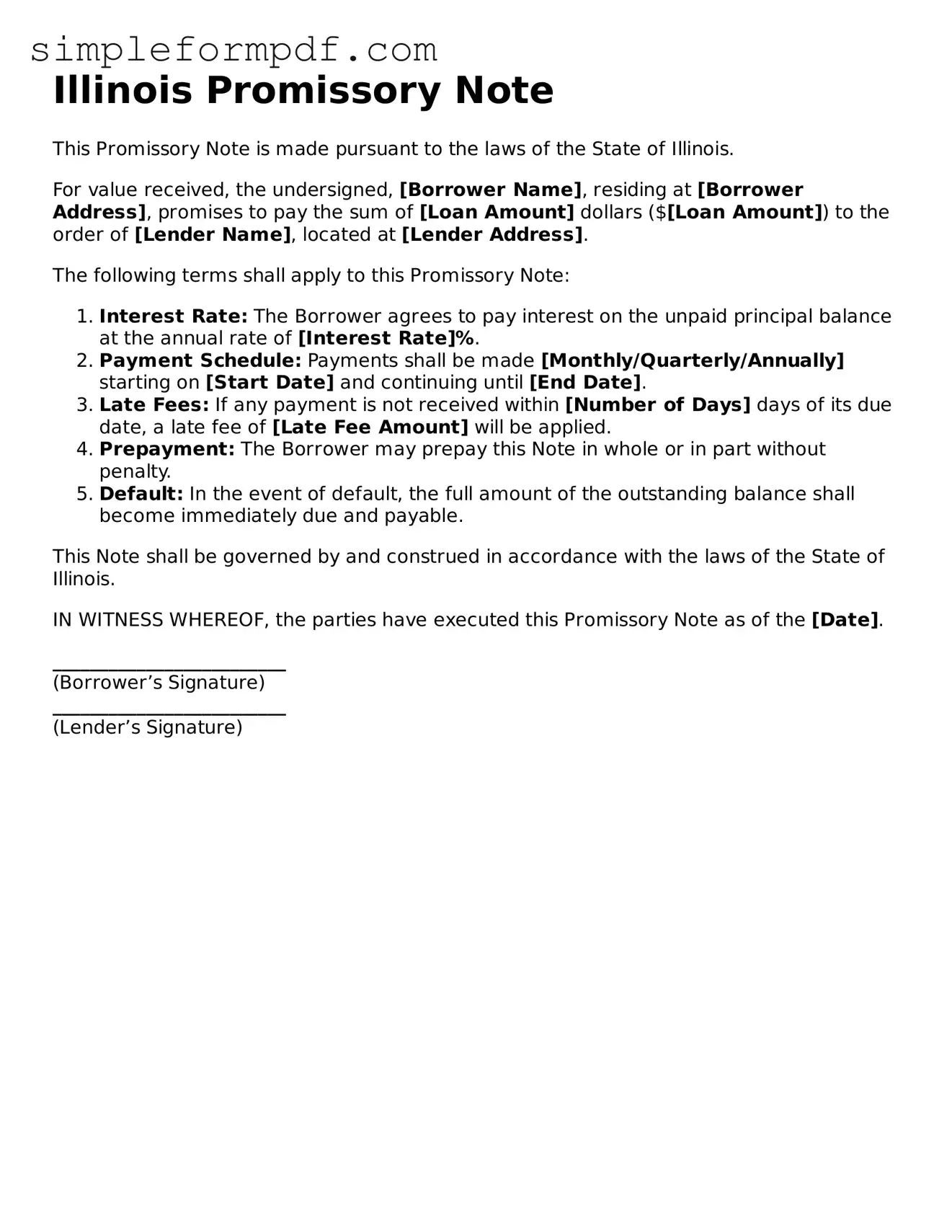Illinois Promissory Note
This Promissory Note is made pursuant to the laws of the State of Illinois.
For value received, the undersigned, [Borrower Name], residing at [Borrower Address], promises to pay the sum of [Loan Amount] dollars ($[Loan Amount]) to the order of [Lender Name], located at [Lender Address].
The following terms shall apply to this Promissory Note:
- Interest Rate: The Borrower agrees to pay interest on the unpaid principal balance at the annual rate of [Interest Rate]%.
- Payment Schedule: Payments shall be made [Monthly/Quarterly/Annually] starting on [Start Date] and continuing until [End Date].
- Late Fees: If any payment is not received within [Number of Days] days of its due date, a late fee of [Late Fee Amount] will be applied.
- Prepayment: The Borrower may prepay this Note in whole or in part without penalty.
- Default: In the event of default, the full amount of the outstanding balance shall become immediately due and payable.
This Note shall be governed by and construed in accordance with the laws of the State of Illinois.
IN WITNESS WHEREOF, the parties have executed this Promissory Note as of the [Date].
_________________________
(Borrower’s Signature)
_________________________
(Lender’s Signature)
